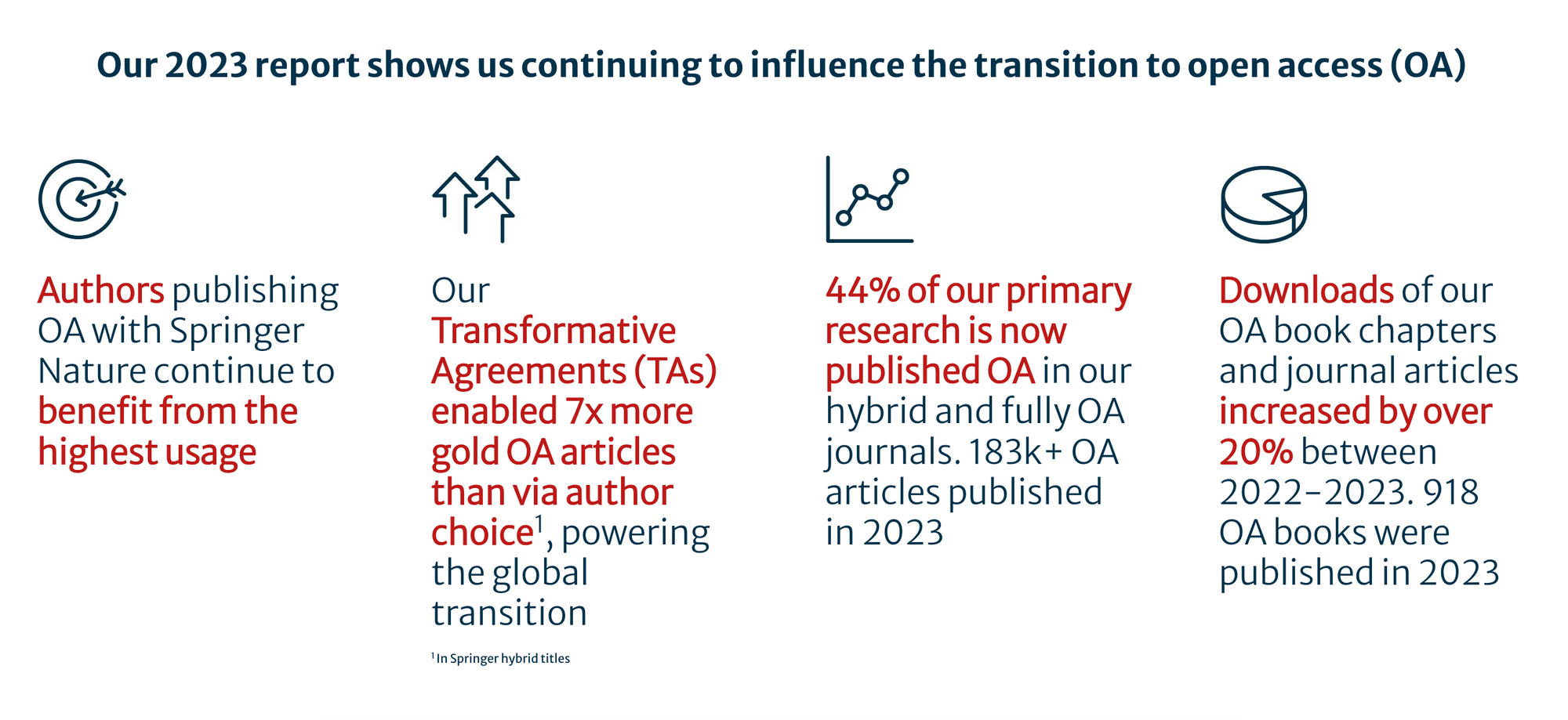Some Gold Open Access (OA) Article Processing Charges (APC) data
Open research is essential. Open Access is essential. My question as always is whether we can be doing this in a manner that is faster and cheaper? Is this the most efficient way to publish open access research. The new data will help ignite more conversations like this. Watch this space.
A cool, new dataset around Gold Open Access (OA) Article Processing Charges (APC) was published recently. This has led to lots of interesting new research. I've also had a play with the data to answer some of my own questions.
Previously, I've attempted to reverse engineer what gold OA could cost and how that scales up to a full "high rejection rate" journal, using eLife's annual financial reports.
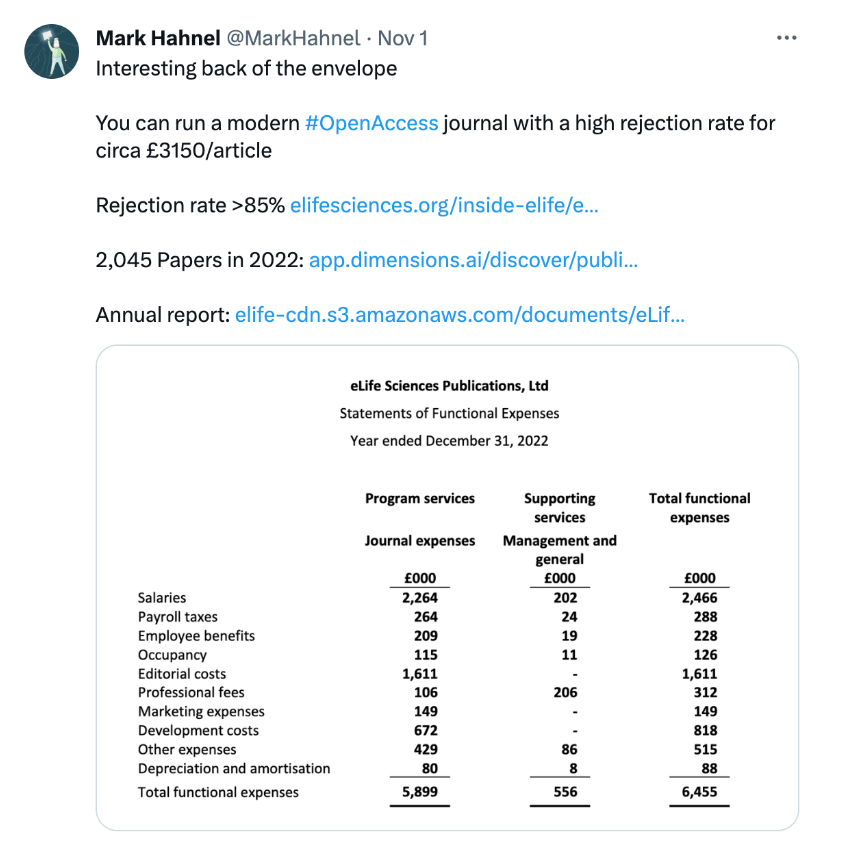
The new dataset that has sparked all of the new analysis can be found here:
Butler, Leigh-Ann; Hare, Madelaine; Schönfelder, Nina; Schares, Eric; Alperin, Juan Pablo; Haustein, Stefanie, 2024, "Open dataset of annual Article Processing Charges (APCs) of gold and hybrid journals published by Elsevier, Frontiers, MDPI, PLOS, Springer-Nature and Wiley 2019-2023", https://doi.org/10.7910/DVN/CR1MMV, Harvard Dataverse, V1
Further on in the post, I've pulled some really interesting graphs from associated publications and re-use of the data. But I also had a dig myself. I also wanted to see whether the price of Gold OA is growing as fast as the volume of Gold OA publications is. Below we can see that although, the cost is increasing year on year since 2019, an 11% increase in this time is below global inflation.
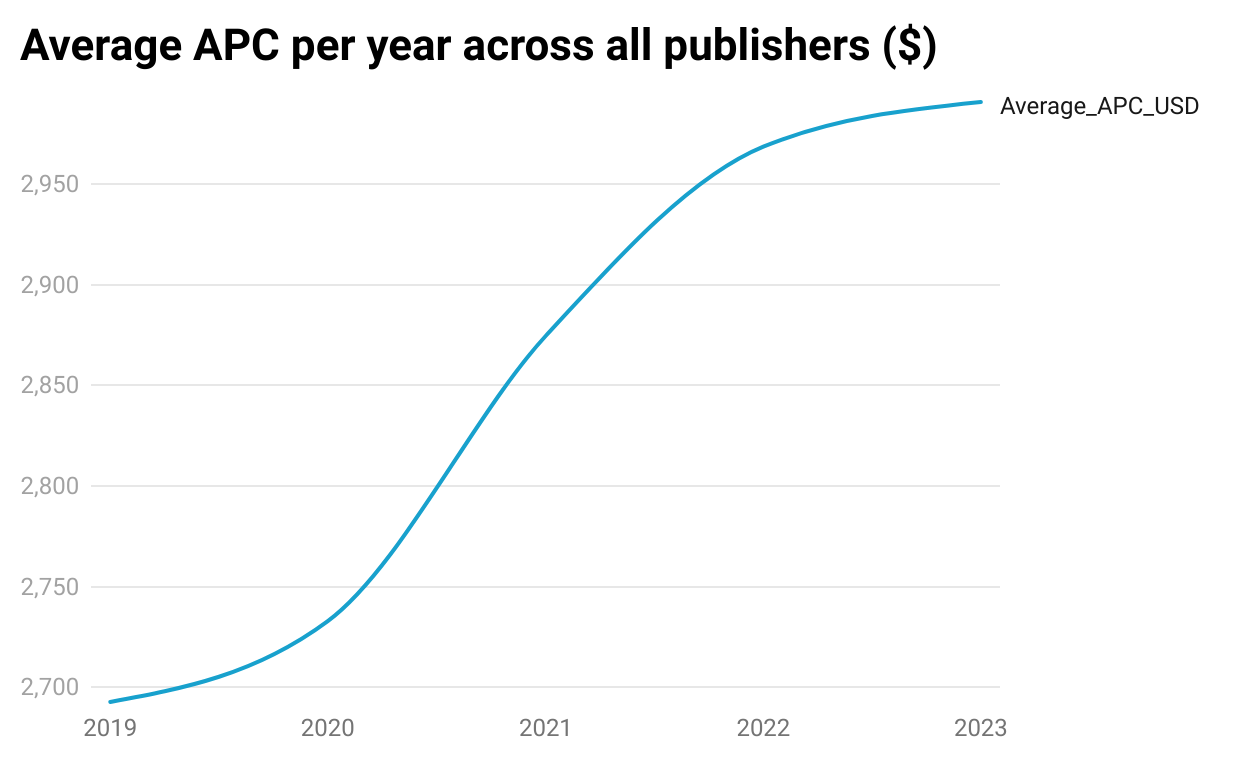
When looking at which publishers are charging the most on average, Wiley pips Springer Nature to the number 1 spot. Anecdotal evidence suggest that this is not the general understanding in the space, where most think that the Springer Nature APCs of >$11,000 for some articles (they did have the highest APC in the dataset) is the highest.

Science covered the data release and associated arXiv papers. They reported on the inflation-adjusted USD revenue that Gold OA is pulling in. There are no signs of plateauing yet.
Authors are increasingly paying to publish their papers open access. But is it fair or sustainable? Is the pay-to-publish model for open access pricing scientists out? | Science | AAAS https://www.science.org/content/article/pay-publish-model-open-access-pricing-scientists
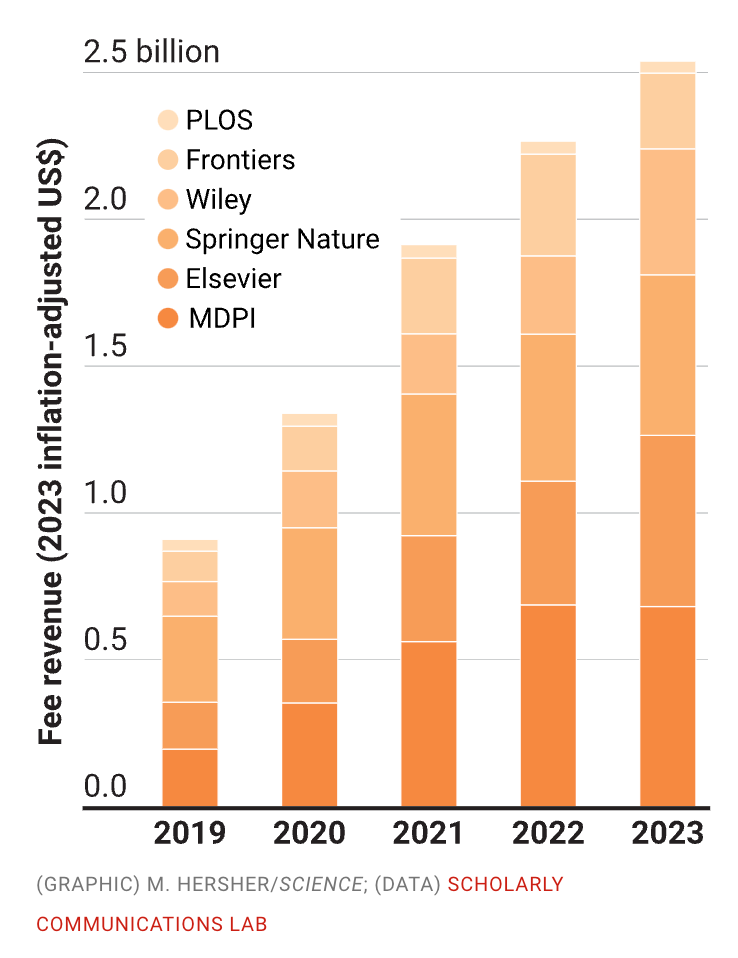
Amongst the graphs in the first paper covering the actual dataset, an interesting one looks at the amount of publishers that are changing APCs and how this fits in with inflation.
An open dataset of article processing charges from six large scholarly publishers (2019-2023) https://arxiv.org/pdf/2406.08356
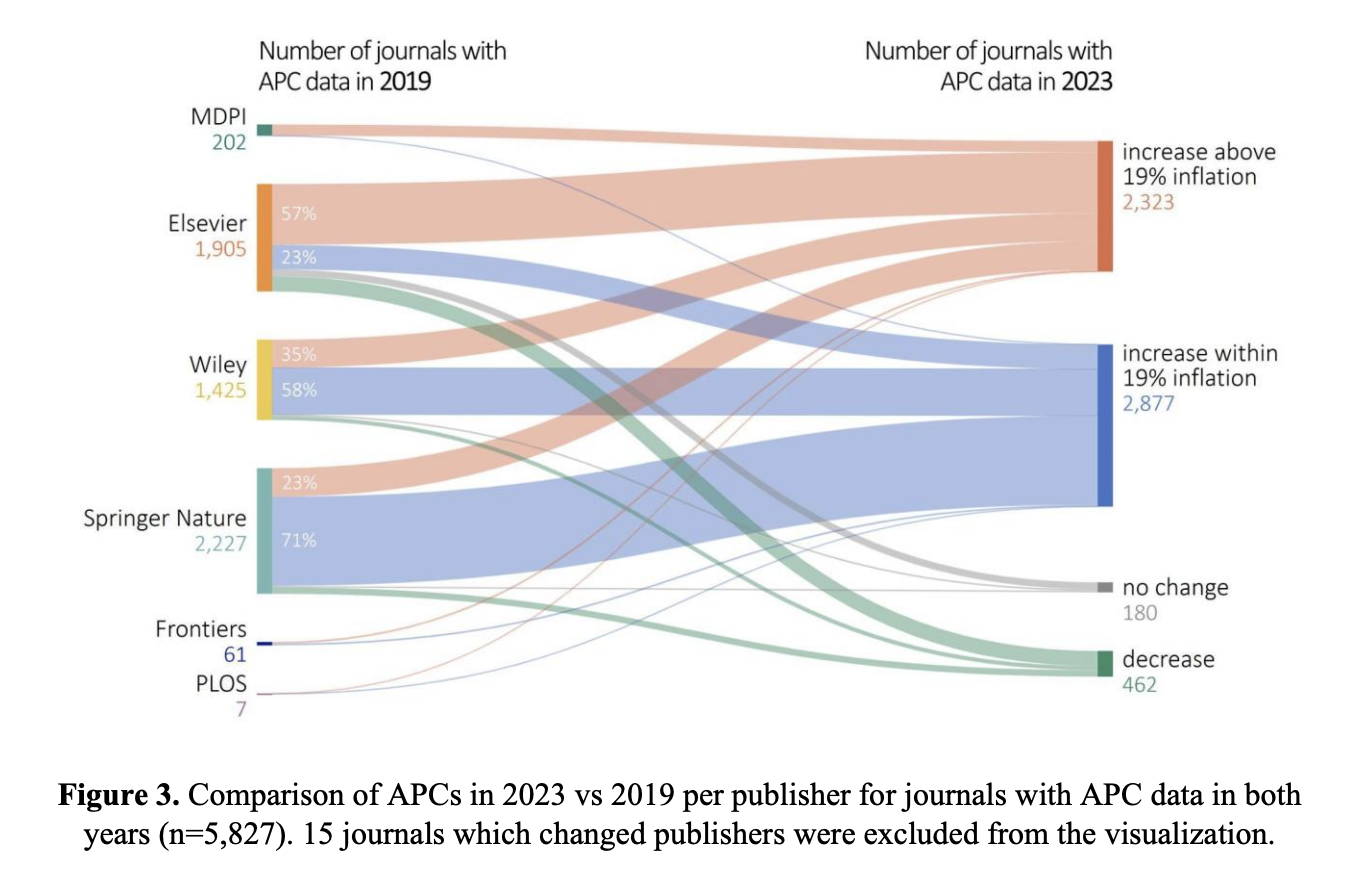
A separate arXiv paper from the same authors has a publisher focus.
Estimating global article processing charges paid to six publishers for open access between 2019 and 2023 https://arxiv.org/pdf/2407.16551
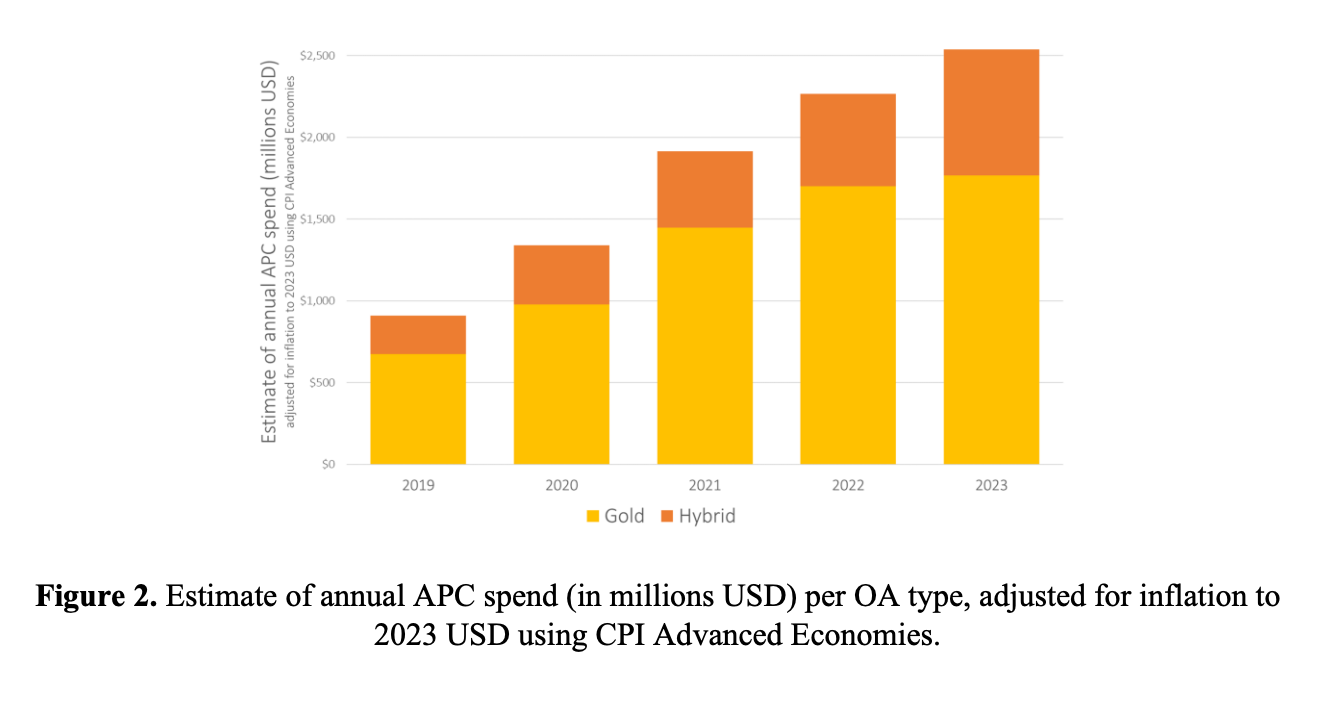
Separately, we also have the Springer Nature 2023 Open Access Report being released, which adds a few more data points. They demonstrate how Gold OA is helping with equity by waiving or offering reduced fees, to the tune of €26m!
The report also highlights key initiatives from Springer Nature in 2023 to support equity in OA. These include expansion of TAs into Africa and the Americas, waiving €26m of APCs in fully OA journals and enabling authors from low-income and low- and middle-income countries (LICs and LMICs) to publish in Nature and the Nature research journals at no cost. They also include publishing over 10,000 OA articles free of charge in 2023 in diamond OA journals and experimenting with new low-cost OA models.
Open research is essential. Open Access is essential. My question as always is whether we can be doing this in a manner that is faster and cheaper? Is this the most efficient way to publish open access research. The new data will help ignite more conversations like this. Watch this space.
